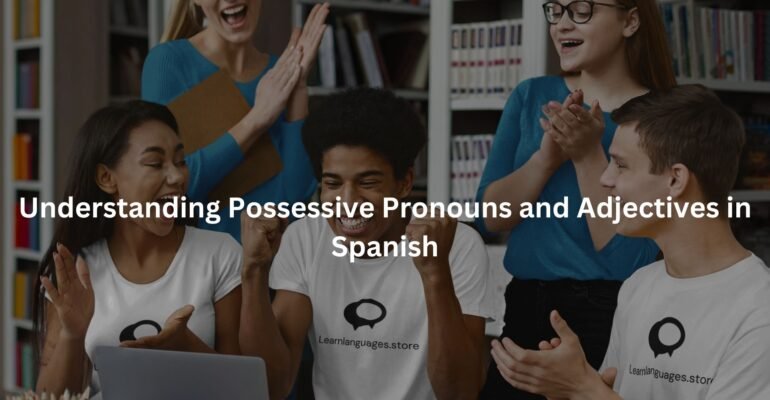Understanding Possessive Pronouns and Adjectives in Spanish
Understanding Possessive Pronouns and Adjectives in Spanish
Possessive pronouns and adjectives play a crucial role in expressing ownership or relationships in the Spanish language. Mastering these forms is fundamental for effective communication and comprehension.
Introduction:
Possessive pronouns and adjectives indicate ownership or relationships between people and things. In this blog post, we’ll explore the different forms of possessive pronouns and adjectives in Spanish, providing examples and usage guidelines.
1. Possessive Adjectives: “Mi libro es interesante.” (My book is interesting.) “Tus ideas son creativas.” (Your ideas are creative.) “Su casa es grande.” (His/Her/Your (formal)/Their house is big.)
2. Possessive Pronouns: “El libro es mío.” (The book is mine.) “Las ideas son tuyas.” (The ideas are yours.) “La casa es suya.” (The house is his/hers/yours (formal)/theirs.)
3. Agreement with Gender and Number: Possessive pronouns and adjectives must agree with the gender and number of the noun they modify. For example, “mis libros” (my books) and “mis lápices” (my pencils) show agreement in number and gender.
4. Expressing Relationships: These possessive forms also indicate relationships between people. For instance, “nuestro padre” (our father) or “vuestra madre” (your (plural) mother) demonstrate family relationships.
5. Placement and Context: Understanding where to place possessive pronouns and adjectives in a sentence depends on the context and function within the sentence structure. Placement before the noun is common, but they can also come after the verb.
Conclusion:
Possessive pronouns and adjectives are essential elements in Spanish for indicating ownership and relationships. Mastering their forms and understanding their agreements with gender and number significantly enhances one’s ability to express relationships and ownership effectively.










